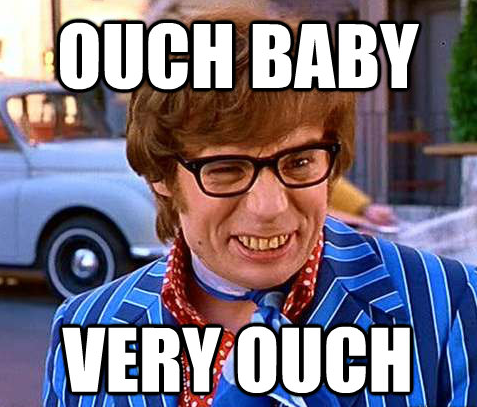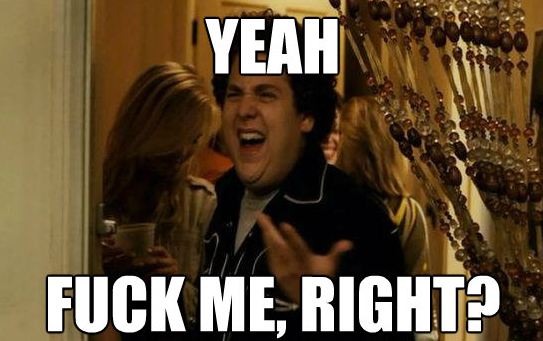I’ll never forget the first time I punched a professional boxer in the face. It was October 2013 and I was preparing for my amateur boxing debut. In preparation for my fight, I would show up to Richard Lord’s Gym every day after work to hit the heavy bags and get in a few rounds of sparring.
Some days there were more sparring partners than others. One Saturday morning, just a couple weeks before my fight, the gym was unusually empty. The only other guy in the gym willing to work with me was a Professional boxer named Daniel. (Or rather, I was the only one in the gym willing to work with him.)
We put on our groin protectors and mouthpieces and 16 ounce gloves. I put on my headgear—he did not. The rules of the three, three-minute rounds were simple: I was to try and hit Daniel and he was not to hit me. Simple enough, I thought.
When the bell sounded, I stepped out and threw out a few cautious jabs. He dodged them easily and side stepped to the left, rolling his eyes at me.
“Come on, man,” he said to me, “snap it out!”
I snapped out a few more jabs with a little more pace. Still no contact. This guy was always two steps ahead.
Ten more punches, still nothing. Lefts hooks, right hooks, uppercuts, overhands—nothing. After a whole three minutes, I had still not hit him once. The bell sounded, and I walked back to my corner, shoulders burning with exhaustion. I must have thrown over a hundred punches and not one of them had landed.
The sixty second rest did not feel nearly long enough when the bell sounded to begin the second round. I stepped out and continued flailing my arms frantically in hopes of making contact with Daniel’s head. No such luck. This continued for another forty five seconds, until an ingenius idea hit me: “Why not aim where his head isn’t?”
I stepped back and stared down my opponent—almost a decade older than me, and twenty pounds heavier. I stepped forward with my left foot and threw a jab, jab, and then a wild right hook aimed a full foot to the right of his head.
I made contact.
“Oh my God, I’m so sor—” I began, before a fist blinded my vision and sent my head snapping backward. It was a jab, but it felt like I had just been hit in the face with a sledgehammer.

“Don’t apologize!” he yelled back, “Keep going! One more minute.”
I couldn’t believe I had hit him. And I had accidentally put some power behind it too.
The second round ended. And the third too. But I would never get another shot in on Daniel. He was simply too fast and too good.
This past year I have spent a considerable amount of time applying to graduate school. Specifically, I have spent dozens of hours and hundreds of dollars basically playing my own version of the lottery—applying to MFA programs in creative writing.
In case you don’t know, an MFA is a Masters of Fine Arts—an often expensive 2–3 year degree with zero value in the job market. What an MFA provides is something unique: time. MFA programs provide aspiring novelists, short story writers, memoirists, and poets the opportunity to surround themselves with a community of serious writers and focus on writing. For 2–3 years, your life becomes writing, proofreading, and re-writing. The way I see it, it’s a fast-track to earning your 10,000 hours in writing. By doing an MFA you could learn in three years what it might take ten to learn on your own if you read and write every day. (At least this is my thought process going in.)
For the past year I have applied to these programs.For over a year I have slaved over writing samples, meticulously tailored statements of purpose, hounded old Professors for recommendations, and read novels like a madman.
I have applied to eleven MFA programs to be specific. They range in size, prestige, funding opportunities, teaching opportunities, weather, and countless other factors. But what they all have in common is this: they will all probably reject me.
MFA programs are notoriously difficult to get into due to their popularity with aspiring writers—read: everybody—and their absurdly small class sizes. Many of the funded programs accept only 10 or 12 people total. Some only accept three. Or two. Most of these programs have hundreds of applicants.
To give an idea of how absurdly competitive these programs are, consider the MFA program at the University of Texas at Austin—my alma mater:
The Michener Center receives over 1,000 applications every year. And they accept a whopping 12 students into their program every year: six poets and six fiction writers. (Why we have the same number of each is beyond me, but that’s another story.) That leaves me—as a fiction applicant—at somewhere around a 1% acceptance rate. That’s six times less than Harvard’s acceptance rate for undergrads.

I have applied to eleven schools. Each of them has an acceptance rate below 5%. There is a distinct possibility that I will get rejected from each and every one of them. The numbers are just stacked against me.
Now that I have finished my applications and it’s all out of my hands, I keep coming back to that Saturday morning with Daniel.
I swung hundreds of times and only managed to hit him once—a shit percentage, granted, but I can still say I punched a professional boxer in the face. (And then got punched in the face back.)
I wonder what will happen come March/April when decisions are made and I hear back from the various graduate schools. Like my sparring session with Daniel, I’m expecting nothing but frustration and failure. But who knows? Maybe, just maybe, I’ll get lucky and land something.
Only time will tell.